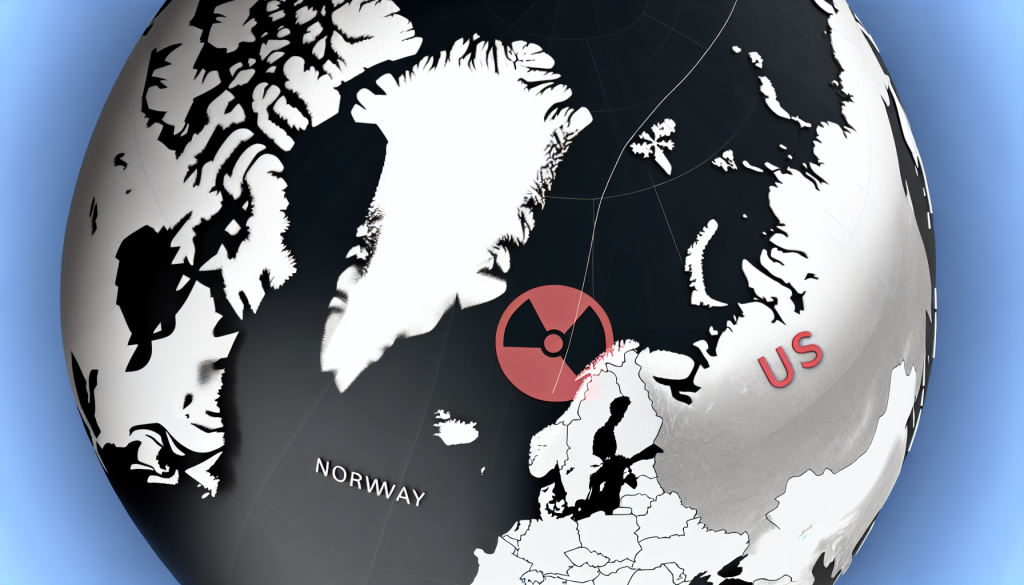Russia Reinforces Its Arctic Presence: A Growing Threat
The Current Situation
Russia is significantly enhancing its military foothold in the Arctic Circle, particularly at a strategic base on the Kola Peninsula. This development includes the positioning of nuclear weapons aimed at the United States, as noted by Norwegian Defense Minister Tore Sandvik. This move adds another layer of complexity to the already strained relations between Moscow and the West.
International Reactions
The implications of this buildup have not gone unnoticed. Newsweek reached out to the U.S. and Danish ministries of defense, along with the Russian foreign ministry, for comments regarding this escalating situation. The responses—or lack thereof—reflect the seriousness with which these nations regard Russia’s military maneuvers.
Why It Matters: Historical Context
The seriousness of this situation can be traced back to February 2022, a pivotal moment when Russian President Vladimir Putin authorized a full-scale invasion of Ukraine. This act not only reignited tensions between Russia and the West but also redefined the geopolitical landscape in Europe, marking the most significant conflict since World War II.
In a recent development, President Donald Trump stated he didn’t want a “wasted meeting” with Putin in Budapest after Russia rejected calls for an immediate ceasefire. Trump has also targeted Russian oil giants like Rosneft and Lukoil with new sanctions, signaling rising concerns within Western leadership about Moscow’s aggressiveness.
Insights from Defense Officials
In an interview with The Daily Telegraph, Sandvik elaborated on the dangers posed by Russia’s military capabilities. He explicitly stated that the Kola Peninsula hosts one of the world’s largest arsenals of nuclear warheads, which are directed not only towards Norway but also the UK and North America. He emphasized NATO’s crucial role in monitoring this situation, mentioning tests of advanced weaponry, including hypersonic missiles and nuclear-capable torpedoes.
The Kola Peninsula is not just home to a stockpile of nuclear weapons; it also serves as the base for Russia’s Northern Fleet, established in 1733. This long-standing military presence points to Russia’s sustained focus on asserting its dominance in the Arctic.
Military Strategy and the Bear Gap
Sandvik pointed out that in any potential conflict with NATO, Russian strategy would likely focus on key maritime chokepoints, including the Bear Gap—separating Svalbard and mainland Norway—and the GIUK Gap, which lies between the UK, Iceland, and Greenland. Control over these areas is seen as vital for Russia’s Bastion defense strategy, which aims to secure submarine operations while denying NATO allies access to strategic waterways.
The Threat of Submarines
Despite suffering considerable losses in Ukraine—reportedly losing around a million soldiers—Russia’s Northern Fleet remains intact and is undergoing modernization. Sandvik described the situation as concerning, with new frigates and multi-role submarines being developed in recent years. He highlighted that while Russia may be struggling on land, its underwater capabilities keep it a formidable player on the world stage.
Historical Perspective
The Arctic’s importance in military strategy is not new. As early as the 1950s, U.S. military planners collaborated with Canadian allies to set up radar systems to detect potential Soviet attacks from the north. Historically, both the Soviet Union and its Western rivals have conducted regular nuclear submarine patrols beneath the Arctic ice, ensuring that this region remains a focal point for military activity.
Looking Ahead: Escalating Tensions
As it stands, Moscow shows no signs of de-escalating its military engagement in Ukraine. The potential for Western nations to provide Ukraine with advanced weaponry, such as Tomahawk missiles, complicates the situation further. The implications for NATO and the broader international community are profound, as the prospect of a nuclear-armed Russia in the Arctic raises significant concerns about global security.
While dialogue remains limited, the stakes have never been higher. The Arctic, an area once seen as remote and less contentious, is increasingly becoming a militarized zone, with potential implications that extend far beyond its icy borders.

